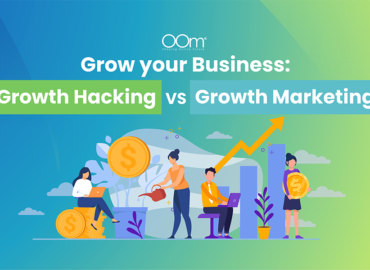Twitter, Facebook, Instagram – for digital marketers, these are the social media havens they need to capture, whether by hook or by crook.
But social media is still a fairly new platform, and marketers are still trying to figure out how to best measure the performance of their social media campaigns. And with all the metrics available for social media, there’s just too much data going around to know which one to best look at.

While which set of metrics best measures a social media campaign’s success is not cut and dry, there are some metrics that marketers should absolutely stop caring much about. It may be good to the eyes to see some of these metrics higher than competitors, but it doesn’t do much for the campaign’s success in the long run.
Some Not-So-Useful Metrics
Analysing intricate social media metrics like post engagement and conversion rate is hard. That’s why some marketing specialists would prefer to look at simple, easier to understand metrics that don’t really give their clients an accurate representation of how well the campaign is converting audiences into leads and clients.
Below are 5 of these not-so-useful metrics that marketers should not worry about:
1. Social Shares
If you’re not familiar with what social shares are, it’s basically the number of Facebook shares, Twitter retweets or Instagram likes you have. You might be thinking “but, that’s an important metric!”
Sorry to burst your bubble: It’s not that important.
When it comes to growing your brand’s reach and brand awareness, it’s good to look at the movement of your social shares and how many people are sharing your content at a given timeline. But when it comes to measuring how well these shares are converting viewers into possible clients, simply showing your social shares to clients is useless.
Social shares don’t tell you if viewers are clicking the link to your site and just shows that someone shared your content on their wall. You can have a 1,000 people share your content, but if they don’t click the link to your website, then the post failed in converting viewers. It looks good on paper, but ultimately useless for the conversion campaign.
2. Followers, Fans, Etc.
Having lots of Facebook fans or Twitter followers is always good. After all, the more fans and followers you have, the better your chances of getting your posts viral. And it’s also good for “bragging rights” to your competitors who have a dwindling online fan base.
But like social shares, having a large fan-base doesn’t always mean you’re getting good conversion rates. People could be following your page for the information you are sharing or the advocacy of your brand, but they could totally be ignoring that “visit site” button on your social media page.
Also, Fan numbers can easily be manipulated through the use of fake accounts and paid followers. These accounts would obviously not help with your conversion rate or your marketing success in the long run.
3. Page Preview
This is perhaps one of the most unusual metrics you can find on Facebook’s insights tab. The definition of this metric is “the number of times people hovered over your page name or profile to see a preview of your page content”
Alone, this metric doesn’t tell you much of your campaign’s progress or progress of your brand awareness initiative, but it does help you find out the demographics of the people who are interested in your brand. This metric is good when mixed with other metrics like page views and page reach.
What Metrics You Should Be Looking At
Now that we’ve covered some metrics that we should care less about, here are some metrics you should be looking at to help you gauge your social media campaign’s progress:
Conversion Rate – Getting the conversion rate from your social media pages and your official website is a little harder to get than simply looking at your page’s number of like or the number of fans.
Essentially, this metric shows how many people visit your site from social media and successfully subscribe to any of your offerings on the site. So this requires data from both your social media and your website’s Google analytics. The higher your conversion rate, the better your social media campaign is driving in potential customers.
Bounce Rate – In contrast to conversion rate, bounce rate measures the volume of visitors that come to your page and leave without taking any action. This means that your social media campaign was successful to bring in a lead, but was not enough to get them to subscribe to your services and offerings.
If you’re receiving less bounce rate from traffic coming from your social media pages, which means your social media campaign is successful in driving valuable traffic to your site.
Use the Right Metrics
Social media – when used properly – can be a powerful tool for your marketing initiative. With the large volume of people on social media on a daily basis, creating a successful social media campaign could bring you a lot of valuable clients that could potentially be your client.
But to create a successful social media campaign, you must be tracking the right metrics and adjusting your strategy accordingly. If you are tracking the wrong metrics, you won’t know how to adjust. Analysing and understanding web metrics is not easy for the untrained, so hiring a trained SEO Specialist will be beneficial to your marketing campaign.





